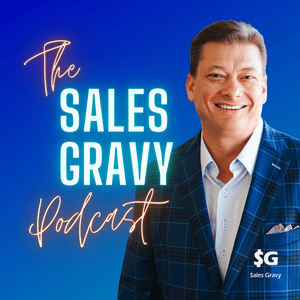Thinking Time (Money Monday)
Cicero once said, "Cultivation of the mind is as necessary as food to the body."
Sales is fundamentally a mental game. Your capacity for understanding your prospects at a deeper level and developing creative solutions that solve their problems—that's your winning edge.
In a profession where you need to outwit and out maneuver your competitors to win, your ability to think, to truly contemplate and reflect, might be the most underutilized competitive advantage in your sales arsenal.
Always Responding. Never Reflecting.
Yet most salespeople these days are starving their minds. They're constantly in motion, constantly busy, constantly doing, constantly in front of screens—but rarely thinking.
We've created a culture where being busy equals being productive. Most salespeople spend their days reacting to emails, to phone calls, to urgent requests, to the latest fire that needs to be put out. We are always responding, never reflecting. Always moving, never thinking strategically about where we are going.
Noise Kills Your Ability to Think
William Penn wrote, "True silence is the rest of the mind; it is to the spirit what sleep is to the body, nourishment and refreshment."
Think about that for a moment. You wouldn't dream of going weeks without sleep because you know your body would break down. But you regularly go weeks, maybe months, without giving your mind the silence and space it needs to just think and function at its highest level.
We live in the age of noise. Constant noise. Digital noise, physical noise, mental noise.
Your phone is buzzing with notifications. Your email is pinging every few minutes. Your CRM is demanding updates. Your manager wants reports. Your prospects are texting. Your colleagues and customers are interrupting.
We have so many things going on at once and so much noise in our lives that it has become almost impossible to think.
All of this noise is killing your ability to think clearly, to make good decisions, to see the big picture, to be the creative and thoughtful professional you were meant to be.
Schedule Thinking Time
That's exactly why scheduling thinking time is so important.
Most people don’t take the time to think because they don’t feel like they can afford to. Sitting quietly and thinking doesn't feel like work. It feels like you're being lazy. Our culture has programmed us to believe that if we're not visibly doing something, we're not being productive.
Likewise, constant stimulation has become a drug. Silence feels uncomfortable because we've forgotten how to be alone with our thoughts.
I passionately believe that we must schedule, on our calendars, time for thinking. No distractions, no music, no TV, no laptop, no phone—just you and your thoughts, alone.
Notice I said "schedule" it. If you don't put it on your calendar, it won't happen. You'll always find something more "urgent" to do.
Thinking Time
Taking time to just think is powerful. It slows you down, helps you relax, and frequently generates incredible ideas and inspiration.
Thinking time isn't meditation, though it shares some similarities. It's not prayer, though some people find it spiritual. It's simply dedicated time for your mind to process, reflect, and contemplate.
The beauty of thinking time is that it can take many forms.
The Quiet Corner Think
Find a quiet space like your office with the door closed, a park bench, your car in an empty parking lot, or a corner of your home. The location doesn't matter as much as the lack of distractions. Start with just 15 minutes. Don't try to go for an hour right away. Build the habit first, then extend the time.
The Walk and Think
This is my personal favorite. Take a long walk alone, without music, podcasts, or phone calls. There's something about the rhythm of walking that unlocks creative thinking. Steve Jobs was famous for his thinking walks. Many of his best ideas came while walking around Apple's campus or through his neig...


